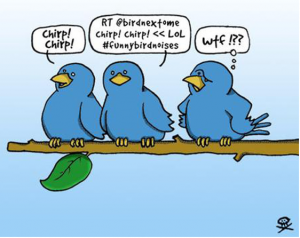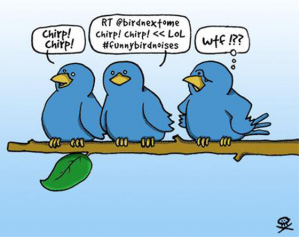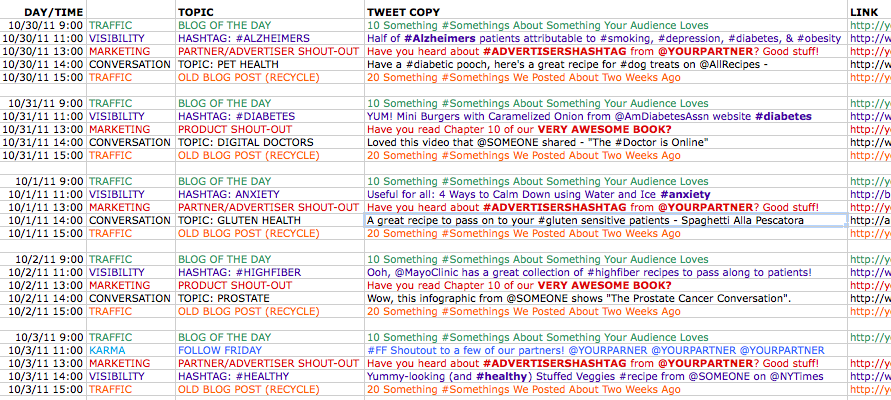
The beauty of scheduling tweets and the love for more focused community building

One thing that the Twitter community has done so well over time is turn a simple 140 character tweet into a work of character graffiti. The insipid word #and isn’t even sacred from a hashtag anymore.
What we like about this, however, is that it gives us lots of ways to write tweets so that we can mix it up day by day. The thing about mixing it up day by day though, is that you need to be paying attention all the time, which can take about twenty hours per week when you sit down and really start counting the hours (…I do).
Recently I started working with a more formulated approach to the basics of Twitter marketing that I wanted to share with the hopes that you might want to share your own tips in the comments as well. The following adjustments to my social media routine have cut the time in half that it takes to run a Twitter program and most of it is the time you waste sitting around and clicking links.
Ok, let’s get into it.
1. Start scheduling tweets: If you’ve read any other social media post I’ve written before now, you know that I’m organic, and social lovey-dovey all the way. However, there are a lot of tweets you send out every day that don’t need you behind the wheel in order to send them, and the bulk-scheduler on HootSuite might just save your life (or free time).
I don’t wish anyone to spend too much time analyzing the following graphic, but here is a basic template that you might build every Monday to schedule tweets for the coming week. This can take three to five hours to complete (especially if you have a bigger editorial schedule and need to pop in some more time slots) but in the end, can also save you five to eight hours right here. The examples here would be for a health publication.

- Blog posts: If you work on the week-ahead editorial schedule model, schedule your blog post tweets at the beginning of the week, or on the Friday ahead of time. In my experience, this is the best method, so if you already have your posts loaded and your future URLs ready… start crafting those tweets.
- Marketing posts: Only one in five (or less) of your tweets should directly promote anything that you sell. You might to choose to send one promotional tweet per day or even skip days and hope that someone discovers your products via the traffic you’ve sent to your blog.
- Hashtag posts: The goal of these posts is to find a hashtag related to your audience and find something to tweet about it.
- Topic posts: These are tweets about articles on external websites that are related to the topics you cover on your website.
- #FollowFriday: Thinking ahead gives you a chance to use this hashtag to send some shout-outs. You probably haven’t done it in a while, have you?
[text_ad]
How it saves time: Less time spent on Twitter means less time wasted on Twitter. Spend 30 minutes to an hour per day dedicated to Twitter. This is the time you spend chatting with followers, asking questions, and being a good tweeter.
Things you’ll notice from the above image are as follows:
- Every day, five posts are scheduled. This doesn’t mean this is all you send out, it just means that the basics are covered and if you get swamped, your feed will be just fine.
- Out of every five posts, there is only one real marketing tweet, two traffic-driving posts and the rest are helpful community posts that still leverage some marketing strategies like @-ing people who you link to and hashtagging popular topics to your audience.
- Two traffic-driving posts per day come from your main blog post (or posts) and one that recycles an old post and makes it new again.
2. Set alerts on your mobile phone for Twitter.
Social media isn’t a 9-5 job, so make sure that Twitter is installed on your phone and that alerts are set. When someone starts a conversation with you (or comments on a scheduled tweet), you should be right there to respond.
How it saves time: You’ll no longer need to be constantly checking Twitter, because you can rest easy knowing that you’ll be alerted if anything pops up.
3. Assign 30 minutes to an hour a day for Twitter:
Even though you’d love to chat on Twitter all day long (or not), you’re officially released of your social media chains by following the previous steps. Now you only need to allot time to pay attention, converse and build your community with whatever time you allot per day.
How it saves time: It allows you to get in, get out, and get back to what you’re doing. And it allows you to enjoy it.
I’d be very interested for everyone to share their own Twitter strategies and if you use a similar workflow, or have found other ways to save time with social media marketing. Let’s discuss in the comments!



@GCGirlfriend, I tend to stick to one post per day if I can afford it, and maybe one or two bonus promotions during the week. I find that it works when you run it similar to your email schedule. 🙂
LOVE this list!!! I just wrote out a Twitter schedule based on your insight. Thank you for sharing.
What do you have on Facebook? Is it a daily post, a weekly one? Using the analogy of Facebook being the living room, I don’t personally like to see business feeds clogging up my personal wall. Do others feel the same?
What is your recommendation for how often and what kinds of posts to put on Facebook?
THANKS!
Hi Katherine,
I’d say Monday through Friday is the minimum, but we’re finding that tweets sent on the weekend get a lot of clicks too, simply because most businesses DON’T tweet on the weekends so there’s less competition. 🙂
This is a terrific guideline – very useful, thank you. I notice that you are only tweeting over five days…is this the ideal for a business or organization?
Glad you guys liked the article! I sometimes reuse tweets also, or schedule them for a few different times a couple months in advance just for good measure. I find that this process gives me time to be more thoughtful about the tweets I write also. 🙂
Hi Amanda,
This is a great article…thanks so much for sharing. I am a big fan of pre-scheduling tweets using HooteSuite. Something that I do is keep a running list of what I call “generic tweets”, things that are always relevant to my business. And then when I’m in a hurry or just need a little help planning my tweets, I reuse tweets from that list.
Thanks for sharing your approach…I really like the idea of adding consisitent hashtag tweets every week!
Debbie
I tweeted this and am cutting and pasting as something to follow. Good info. Thanks!